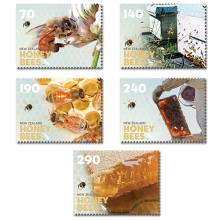Bayer-funded study claiming pesticides safe for bees questioned by regulators
Something is very wrong in Wellington County, Ontario – Jim Coneybeare says his bees are dying at an alarming rate.
“It’s my livestock. It shouldn’t be dead stock,” he says. “There is a toxic environment out there that is killing our bees. It’s a severe problem.” Coneybeare believes a group of pesticides called neonicotinoids (NNIs) are killing his bees. Over the past three years, Canadian beekeepers have faced annual losses as high as 35 percent. “Let’s face it, this is an insecticide designed to kill insects, and it’s doing that. It’s killing bees,” he says. Experts say these losses are unsustainable. One-third of all food we eat – including almonds, melons, tomatoes, and cucumbers – is pollinated by bees. Beekeepers like Coneybeare just can’t keep up. While there are many factors associated with bee declines – including mites, viruses, and loss of habitat – there is mounting evidence that NNIs, such as one manufactured by Bayer CropScience called clothianidin, play an important part. When used appropriately, Bayer says its pesticide does not hurt bees. “Currently there is no science that say otherwise,” says Bayer’s Ontario research-and-development manager Luc Bourgeois about the company’s production of clothianidin. Clothianidin is used widely on corn, soya, and other crops.










